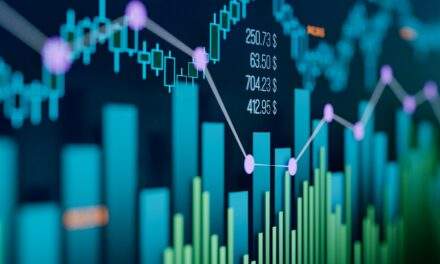Last week, I stopped by Home Depot for a new leaf blower battery and was greeted by a 10-foot inflatable Santa Claus.
Rather than feeling the Holiday spirit, my initial reaction was: “Already!? I still haven’t put away my Halloween decorations!”
Upon returning home, I made sure to clear my front bushes of any remaining cotton spider webs and carry the life-sized skeleton into the attic.
It feels like we’re starting the Holiday season earlier every year.
Our seaside village’s 100-foot Christmas tree went up in mid-October.
My dog runs for cover in early June instead of the July 4th weekend.
Heck, Black Friday sales, which traditionally happen on the Friday after Thanksgiving, now begin sometime between the first and second week of November.
Maybe things have been going so well we are giving ourselves more time to spread joy this year…
The stock market sure seems like it’s in a festive mood this year.
With the Nasdaq up 25% and the S&P 500 rising almost 24% in 2024, things are quickly shaping up for a Santa Claus rally to end the year.
You might not realize it, but this market pattern is so reliable that it’s almost like having tomorrow’s newspaper today.
While the big firms focus on complex algorithms and high-frequency trading, they’re missing one of the market’s most predictable profit opportunities: seasonal trading.
Here’s the thing — the market has a rhythm. Just like you wouldn’t put up Halloween decorations in December, smart money knows exactly when to play specific sectors.
And here they are:
The Big Seasonal Plays
Let’s start with everyone’s favorite — the Santa Claus Rally.
In the last five trading days of December through early January, the S&P 500 typically gains about 1.3%. But here’s what most investors miss: when Santa doesn’t show up, it often signals trouble ahead.
That’s why Wall Street veterans say: “If Santa fails to call, bears may come to Broad and Wall.”
Yale Hirsch, the founder of the Stock Trader’s Almanac, came up with the term “Santa Claus Rally” in 1972.
He defined the timeframe of this rally as the final five trading days of the year and the first two trading days of the new year.
The idea is that several factors could contribute to an upswing during this period including:
- General sentiment shifts from seasonal joy and optimism on Wall Street and Main Street during the holidays.
- Investors selling stocks for year-end-tax reasons, causing dips in prices and creating a buying opportunity.
- People receiving year-end bonuses and deciding to invest in the market.
- Institutional investors settle their books and go on vacation, leaving the market in the hands of more bullish retail investors.
- People start investing habits or enrolling in investment programs as part of a new year’s resolution or due to a general feeling of a “fresh start.”
So, what exactly does the Santa Claus Rally show?
The Stock Trader’s Almanac compiled data for this seven-day period for the last 74 years spanning from 1950 through 2023 and showed that a Santa Claus rally occurred 58 times.
That means Santa shows up roughly 74% of the time.
The Santa Claus rally is also considered a somewhat accurate predictor of the next year’s stock market direction.
Since 1999, the market has risen 19 times during the Santa Claus rally and the following year, the S&P 500 posted gains 14 times — that’s a 74% accuracy rate.
Out of the five times the market lost ground during that seven-day period, the market fell in three of the following years or 60% of the time.
Although it’s likely, a market drop is not a guarantee.
Just take a look at the seven-day period between 2023 and 2024. The market actually dropped 1.03%, but 2024 has been one of the best years for the market — already up 24% this year.
So although it’s a helpful indicator to look at, it’s not one to make bets on.
But the real opportunities? They’re in the lesser-known seasonal trades.
Take President’s Day in February. While most investors are still recovering from their holiday hangover, auto stocks like Ford and GM often surge. Why?
Dealers launch their first major promotions, driving sales and stock prices higher. It’s no coincidence — by February, investors have a clearer picture of the year ahead.
Fourth of July might seem quiet, but that’s exactly why it’s interesting. While trading desks thin out, certain sectors historically soar.
Airlines like Delta and United often take off, and Home Depot typically sees surprising gains. Most investors miss these moves because they’re too busy planning their barbecues.
Then comes Labor Day — the retail sector’s time to shine. As parents load up on school supplies, companies like Walmart, Target and Apple typically see their stocks climb.
The best part? This pattern repeats year after year.
The Edge Most Miss
Here’s why these opportunities persist: Wall Street’s gotten too complex. While hedge funds chase algorithms and high-frequency trades, they’re overlooking these simple, reliable patterns that have worked for decades.
But remember — timing is everything.
These aren’t buy-and-hold plays. You need to know exactly when to get in and when to get out.
Strong market trends can override seasonal patterns, so you’ve got to stay alert.
The Bottom Line
While everyone else obsesses over earnings reports and Fed meetings, smart investors are quietly profiting from these calendar-based opportunities. The market’s complexity often blinds investors to simpler, more reliable patterns.
Sometimes the best edge isn’t in complex trading strategies — it’s in understanding how markets move with the calendar.
And here’s the kicker: These patterns have persisted since the 1980s, even as markets have become more efficient.
A groundbreaking 1994 study showed that holiday effects produced the largest abnormal returns among all seasonal variations.
That’s the kind of edge that could make a real difference in your portfolio.
Until next time,

Ian King
Chief Strategist, Strategic Fortunes









